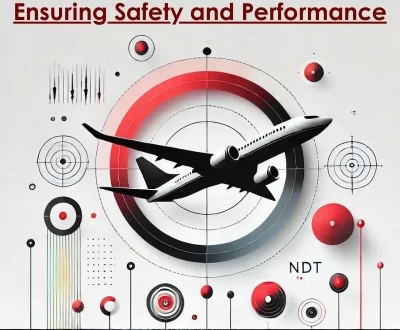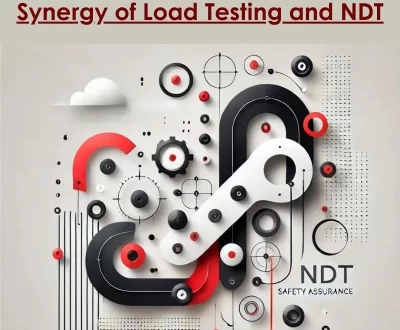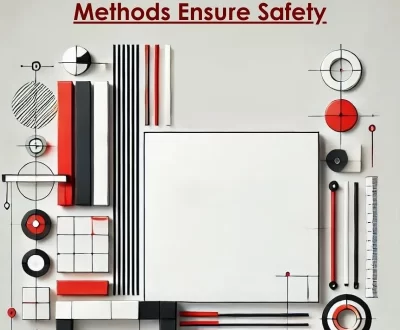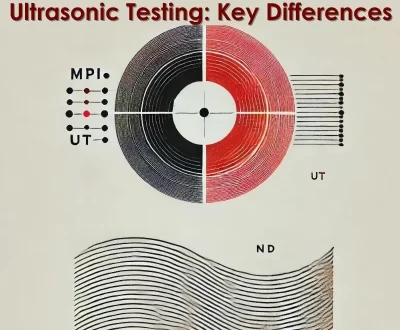Non-Destructive Testing (NDT) and Quality Control
- October 4, 2024
- Uncategorized
In today’s industrial environments, ensuring the safety, reliability, and operational integrity of machinery and materials is crucial. Failures in heavy-duty equipment, pipelines, and structures can, consequently, cause financial losses, operational delays, and threats to human life. This is where Non-Destructive Testing (NDT) becomes a vital asset.
Non-Destructive Testing (NDT) encompasses various techniques that inspect materials without harming their integrity or altering them. The significance of NDT lies in its ability to detect flaws, defects, and inconsistencies early in the production process. Consequently, this testing method enhances product quality and reliability, thereby significantly reducing failure risks in critical applications.
The Importance of Non-Destructive Testing (NDT) in Modern Quality Control
Quality control is a fundamental aspect of any industrial process. Integrating NDT into quality control enables companies to meet stringent regulatory standards while minimizing waste and avoiding unnecessary downtime. Additionally, since NDT preserves the integrity of the tested products, it is widely applied to assess both raw materials and finished goods. By utilizing NDT, industries can:
- Identify Defects Early: NDT enables the early detection of potential issues, such as cracks, corrosion, or other wear, thus preventing more severe problems in the future.
- Reduce Downtime: Since NDT methods do not require disassembly or destruction of parts, inspections are quick and cause minimal disruption to operations, reducing overall downtime.
- Enhance Safety: Thirdly, regular inspections using NDT techniques help identify possible failures even before they become critical, thereby improving the safety of both workers and equipment.
- Maintain Compliance: Industries are subject to stringent safety and quality regulations. NDT ensures that companies remain compliant by providing accurate and reliable inspection data.
- Optimize Costs: By avoiding the need to destroy or dismantle parts during inspection, NDT minimizes material waste and repair costs, leading to greater cost-efficiency.
Common Non-Destructive Testing Methods and Their Industrial Applications
Several NDT techniques are available, each designed to address specific inspection requirements. Some of the most prevalent methods include:
- Ultrasonic Testing (UT) uses high-frequency sound waves to detect internal flaws in materials. It is commonly applied in aerospace, energy, and automotive industries to inspect components like welds, pipelines, and turbine blades.
- Radiographic Testing (RT) uses X-rays or gamma rays to detect internal defects in materials, commonly applied in industries such as oil and gas, power generation, and shipbuilding for inspecting pipelines, vessels, and welds.
- Magnetic Particle Testing (MT) detects surface and near-surface flaws in ferromagnetic materials. It’s widely used in automotive, aerospace, and steel industries to inspect components like crankshafts, gears, and structural parts.
- Dye Penetrant Testing (PT) detects surface cracks in non-porous materials by applying a liquid dye. It’s widely used in construction, aerospace, and manufacturing to inspect welds, castings, and machined parts.
- Eddy Current Testing (ET) uses electromagnetic induction to detect flaws in conductive materials, primarily for identifying cracks, corrosion, and thickness variations in industries like aerospace, automotive, and electrical engineering.
These methods allow for the thorough inspection of materials without the need for destruction or disassembly, offering a cost-effective and efficient solution for a wide range of industrial applications.
Key Industries Benefiting from Non-Destructive Testing and Defect Detection
Non-Destructive Testing (NDT) is essential across various industries, helping detect defects and ensure quality, safety, and reliability. Here are some key industries benefiting from NDT testing and defect detection:
1. Aerospace Industry
The aerospace industry benefits from NDT by detecting cracks, corrosion, and defects in critical components like wings, engines, and fuselages. This ensures safety, enhances performance, and prevents catastrophic failures during operation. Early detection of these issues extends the lifespan of aircraft.
2. Oil and Gas Industry
In the oil and gas industry, NDT is crucial for inspecting pipelines, pressure vessels, storage tanks, and offshore platforms. NDT helps detect corrosion, cracks, and defects early, preventing leaks, environmental hazards, and costly downtime while maintaining compliance with safety regulations.
3. Automotive Industry
The automotive industry relies on NDT to detect defects like cracks and corrosion, enhance product quality, prevent failures, and boost vehicle performance and safety. Furthermore, methods such as Ultrasonic Testing (UT) and Magnetic Particle Testing (MT) identify flaws in critical components, including crankshafts, suspension parts, and body frames, ensuring safety and reliability. This enables manufacturers to meet quality standards and optimize product performance.
4. Power Generation Industry
Power plants, turbines, and nuclear reactors rely on NDT to ensure operational safety and efficiency. Moreover, regular inspections detect defects like cracks and corrosion early, preventing costly failures. As a result, downtime decreases, and operational reliability improves. NDT is particularly crucial in nuclear power, where safety remains paramount.
5. Construction and Infrastructure
NDT plays a crucial role in the construction industry by inspecting bridges, buildings, and other structures to ensure integrity and safety. Techniques like Radiographic Testing (RT) and Ultrasonic Testing (UT) examine welds, concrete, and steel for cracks, voids, or other defects, preventing catastrophic failures, enhancing safety, and extending the lifespan of infrastructure projects.
6. Manufacturing Industry
In manufacturing, NDT is widely used to inspect raw materials, machined components, and finished products. Apart from this, techniques like Dye Penetrant Testing (PT) and Eddy Current Testing (ET) ensure products meet quality standards before market release.
This improves product reliability, reduces recalls, ensures quality, and helps manufacturers maintain a competitive edge.
Conclusion
Non-Destructive Testing (NDT) has become an integral part of quality control in various industries. By enabling the detection of defects and flaws without damaging the material or product, NDT ensures safety, reliability, and efficiency.
As the industrial sector evolves, NDT remains vital for quality assurance, ensuring safety and performance standards are met.
More from our blog
See all postsRecent Posts
- Load resistance evaluation in Software vs Structural Engineering October 6, 2024
- NDT Testing in Aerospace Industry: Ensuring Safety and Performance October 6, 2024
- Safety Assurance Through the Synergy of Load Testing and NDT October 6, 2024









Pingback: Load Testing - Krishna Tech Solution Company
Pingback: NDT in Aerospace Industry: Ensuring Safety and Performance - Krishna Tech Solution Company